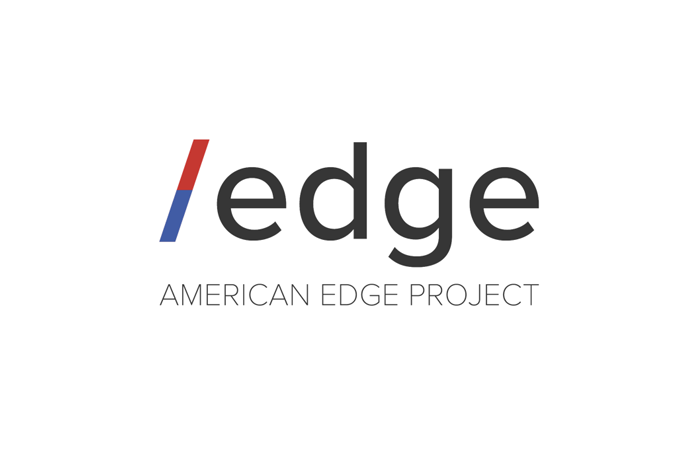By Doug Kelly, CEO of the American Edge Project
At the Paris AI Summit, Vice President JD Vance pledged “This administration will ensure that American [artificial intelligence] AI technology continues to be the gold standard worldwide, and we are the partner of choice for other foreign countries and certainly businesses as they expand their own use of AI.”
It’s a timely promise, as the United States is locked in a high-stakes race with China to lead the future of AI. The winner sets the rules for the AI age, gaining long-term security and economic advantages for decades to come.
That’s why America must “play to win” when it comes technology. The choices American policymakers make today will determine whether the digital future is built on American values—innovation, free expression, and competition—or whether it falls under China’s model of censorship, surveillance, and authoritarian control.
China’s AI Ambition: Be Global AI Leader by 2030
The AI race won’t be easily won. The scale of China’s efforts to become global tech leader are staggering, and in many cases, dwarf those of the U.S. and our allies:
- $2.8 Trillion in Tech Investments: China is pouring a staggering $2.8 trillion into usurping America as the globe’s preeminent tech powerhouse. Half this investment came in 2020-25 from state-driven funds to advance AI, semiconductor production, and other strategic technologies, while the remaining $1.4 trillion is projected to flow into China’s AI sector by 2030 to secure global leadership.
- Heavying Up Energy & Transmission Infrastructure: AI’s transformational technology requires massive amounts of energy. To scale and support AI growth, China has built 30,000 miles of ultra-high voltage (UHV) transmission lines and invested $442 billion in grid modernization to power AI growth. Meanwhile, the U.S. has zero UHV lines, and our outdated, near-capacity grid is delaying AI expansion. In fact, 12,000 domestic energy projects are stalled, waiting for grid connection, throttling our AI growth.
- Creating A Deep Pipeline of Tech Talent: China is building an AI-ready workforce at an unmatched pace, producing 3.6 million Science, Technology, Engineering, and Mathematics (STEM) graduates annually – four times the U.S.’s 820,000. Additionally, nearly half of the world’s top A.I. researchers came from Chinese undergraduate institutions, as opposed to about 18 percent from American ones.
- Aggressively Spreading Authoritarian AI Globally: As a Trojan horse to embed CCP-aligned values into global technology infrastructure, China is now flooding the world with more than 100 low cost open-source AI models. Nations adopting these models become increasingly dependent on Chinese tech, giving Beijing a backdoor to censor content, manipulate narratives, exfiltrate sensitive data and trade secrets, and expand its surveillance-driven AI governance—all while undermining democratic norms and U.S. leadership. As Vice President Vance warned, partnering with China’s AI “means chaining your nation to an authoritarian master that seeks to infiltrate, dig in, and seize your information infrastructure.”
What America Needs to Do to Win
To secure lasting AI leadership, the United States must act decisively. Here’s how:
- Launch a Bold National AI Strategy: The U.S. must treat AI as a modern-day moonshot, prioritizing investments in energy infrastructure, STEM education, advanced semiconductor production, and workforce development. America must also harden its AI infrastructure, securing our data centers and preventing trade secret theft by authoritarian regimes like China.
- Win in Both Open- and Closed-Source AI: As the Center for a New American Security warned, “A world of unchecked, Beijing-built AI ecosystems would be a major blow to the U.S. and to humanity writ large.” China’s open-source AI tools are embedding CCP values of surveillance, censorship, and misinformation into global tech infrastructure. The U.S. must lead in AI development and deployment – across both open- and closed-source models – to ensure democratic principles shape AI’s future. Ceding this ground risks allowing China’s authoritarian vision to define global AI, with serious national security implications if allies begin relying on Chinese-built models.
- Avoid Self-Inflicted Policy Wounds: America must stop handcuffing its own innovation with misguided federal and state-level policies that restrict AI development. Overregulation, excessive restrictions on AI exports, and bureaucratic roadblocks will only slow U.S. progress while giving China a free pass to dominate. European regulators must also stop burdening American tech companies with heavy fines and regulations while leaving Chinese AI giants untouched. Under the EU’s Digital Markets Act (DMA), U.S. firms face billions in tariff-like costs, plus $22-$50 billion in compliance expenses—funds better spend on innovation.
- Global AI Leadership Through Partnerships: Supercharge public-private partnerships to accelerate U.S. AI innovation. Globally, the U.S. must set AI standards through partnerships in the United Nations (UN), the Organization for Economic Cooperation and Development (OECD), and the Association of Southeast Asian Nations (ASEAN) while working with U.S. tech firms to deploy AI worldwide. Supporting allies with AI tools and education will counter China’s influence and uphold democratic values.
The Bottom Line
America always meets the moment – from the Manhattan Project to Apollo to creating the internet – to secure our leadership. Now, AI is the defining competition. If we don’t lead, China will—and the world will follow Beijing’s rules. We must act now to ensure the digital future is built on American innovation, not authoritarian control.
